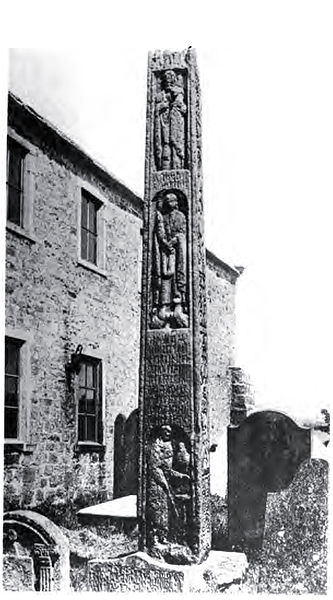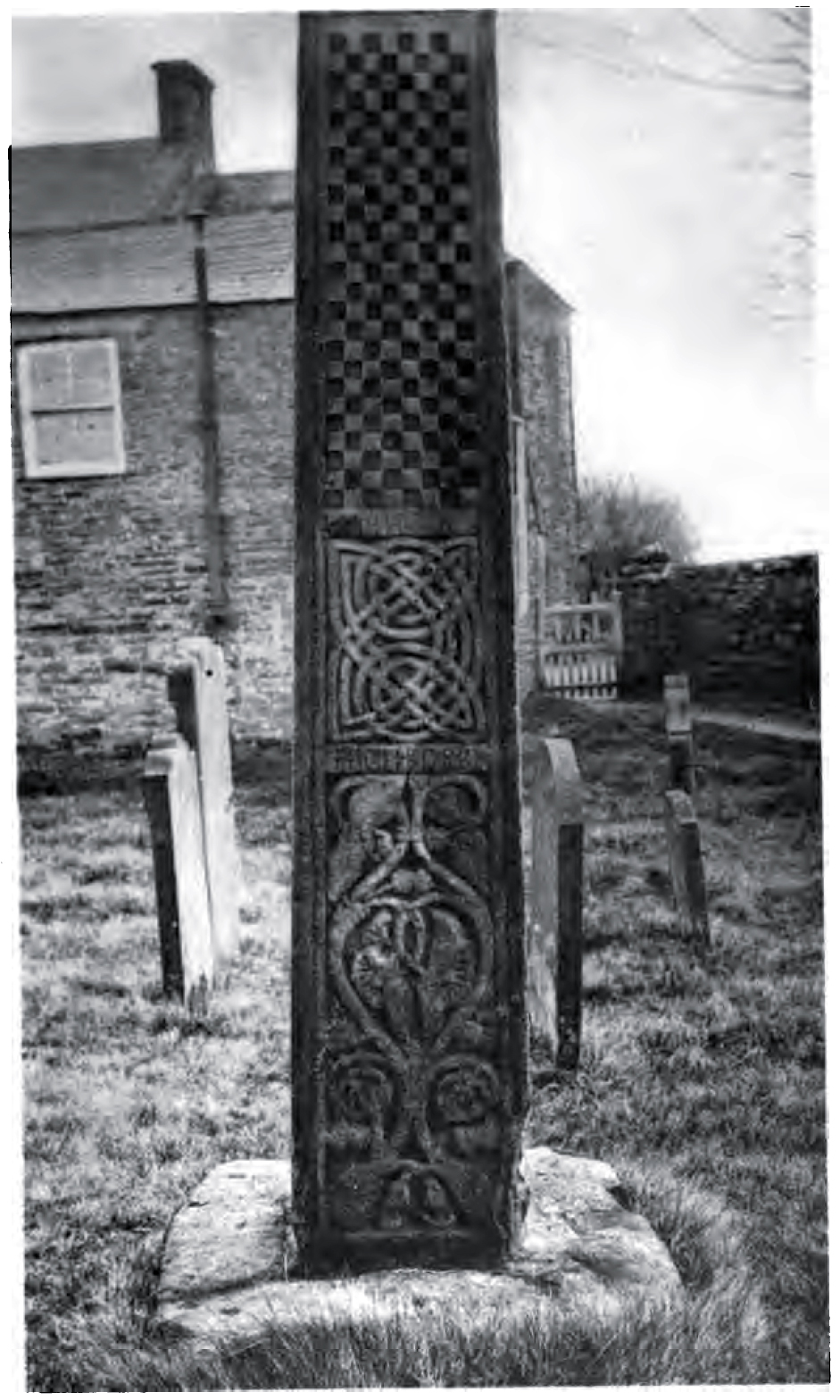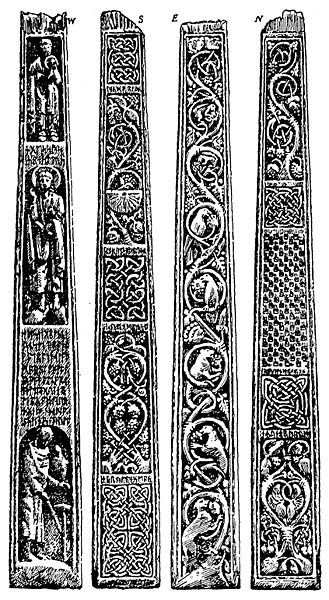BEWCASTLE CROSS
Bewcastle Cross is one of the finest structures of its type to survive from Anglo Saxon Britain. The design on the Cross is more like that found in Rome and Syria, rather than the more common carvings found in Cumbria which had their roots in the West with the Irish Celts.
The Bewcastle Cross is dated back to the seventh century and the team of master masons who carved it may well have been the same one which was brought in from Rome by Benedict Biscop, to work on Jarrow Monastery. Many Syrian monks and craftsmen moved to Rome to avoid persecution in their own country, so the trace of Syrian artistic style in the carving on the Cross is not as surprising as it at first seems.
The runic carvings on the Cross are so worn that it is difficult to translate them fully but it is thought that they commemorate King Alchfrith of Deira who tried to take power and control in Northumbria during the seventh century.
BEWCASTLE
Bewcastle is a group of cottages and farms situated to the North of Hadrian’s Wall. In AD79 a Roman fort was built here because of the strategic importance of the village on the wall, but later it was taken over by the Saxons (Bew Castle) and was still held to be of military importance when the Normans moved into the area.
After the Act of Union, the border wars with Scotland stopped and Bewcastle and the surrounding area became a lawless region for a considerable time until things settled down again. St. Cuthbert’s Church was built over the site of the Roman fort and although it has been rebuilt several times over the years, it still has its thirteenth century east end.
Many of the houses here were built with stone that came from Hadrian’s Wall and the ruins of several pele towers have been discovered in the surrounding moorland. These were fortified keeps, or tower houses which were used as watch towers in times of unrest.
The whole area has reminders of the turbulent history of the area and the historian with a keen eye will notice them in many of the buildings.


